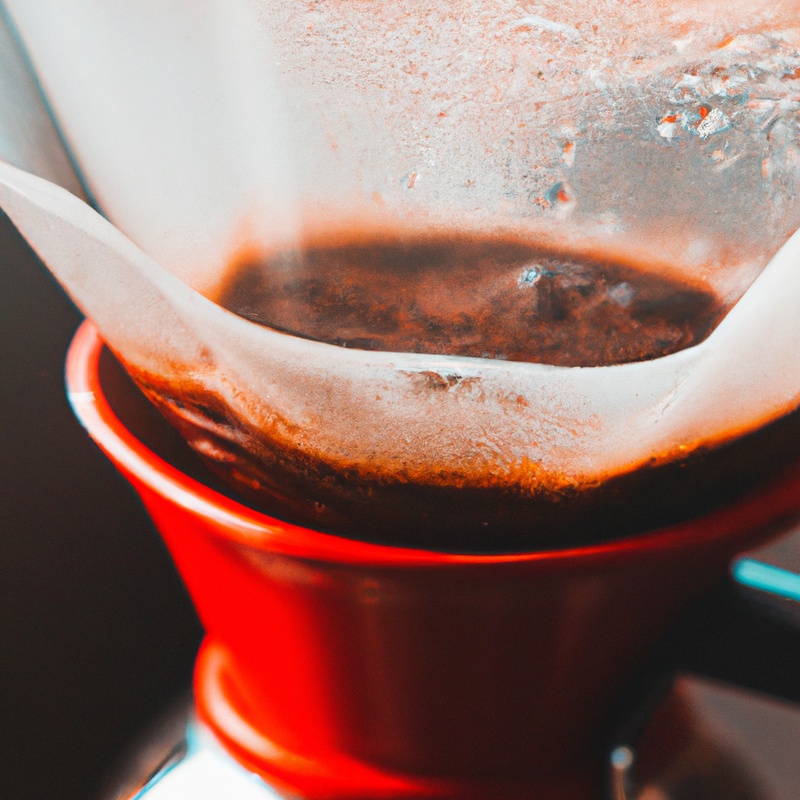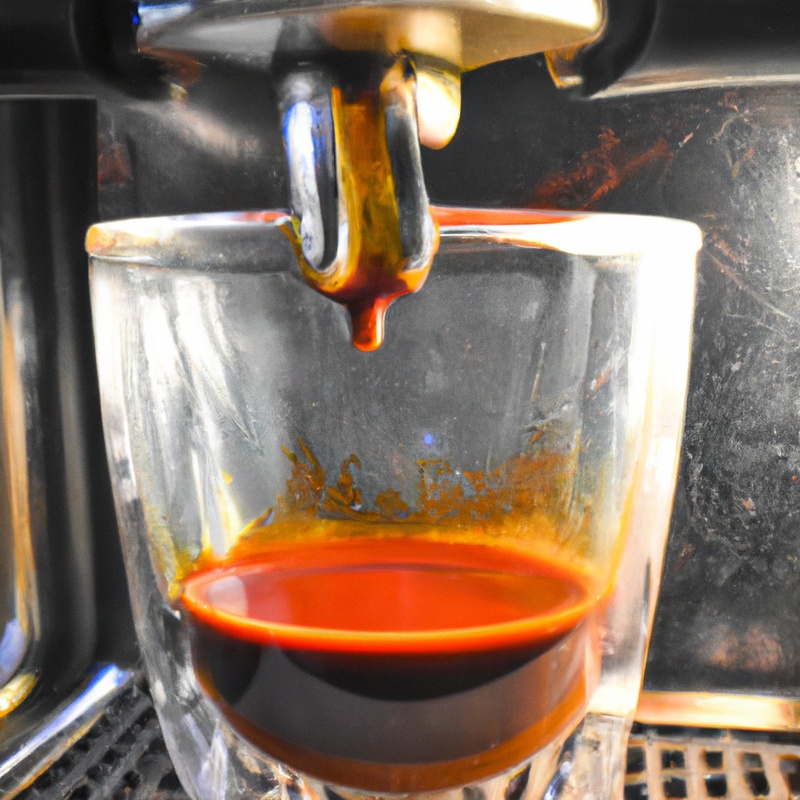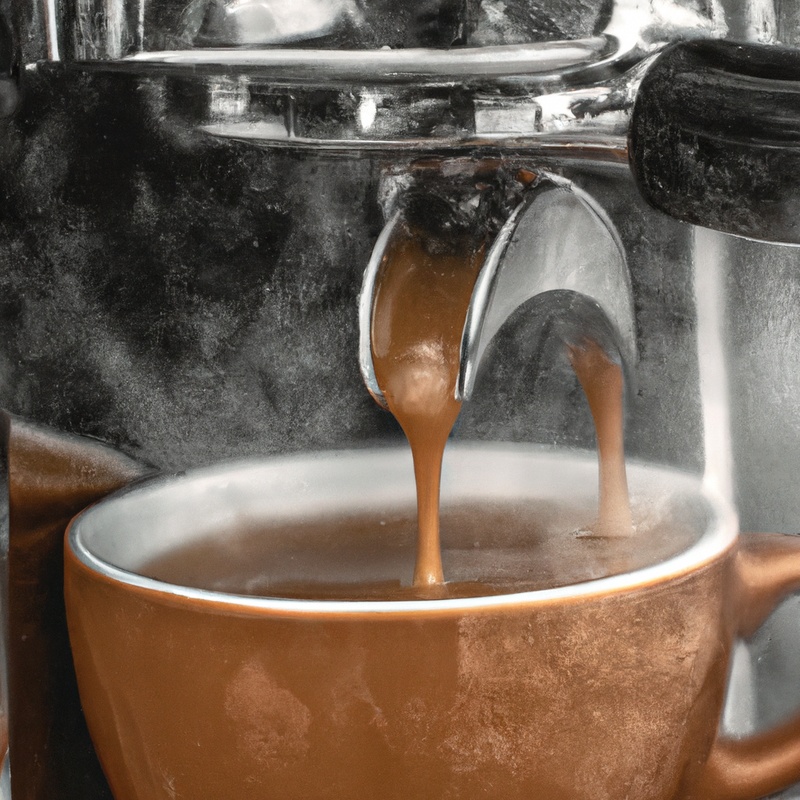Key Takeaways:
- Brewing coffee with a Kalita Wave dripper and metal filter offers a clean, flavorful cup of coffee.
- Using the correct water temperature is essential for extracting the best flavors from your coffee.
- The Kalita Wave dripper’s unique design promotes even extraction and helps prevent over-extraction.
- Experimenting with different grind sizes can help dial in the perfect brew time and flavor profile.
Are you tired of mediocre coffee that just doesn’t hit the spot? Well, get ready to elevate your coffee game because I’m about to show you how to brew a perfect cup using a Kalita Wave dripper with a metal filter.
This step-by-step guide will walk you through the entire process, from preparing the equipment and ingredients to enjoying that rich, flavorful brew.
But that’s not all! I’ll also share some tips and tricks to help you nail your technique and experiment with different flavors. Plus, I’ll answer some burning FAQs that will make you a true coffee connoisseur.
So, grab your Kalita Wave dripper and let’s get brewing!
| Steps | Instructions |
| 1 | Grind coffee beans to a medium-coarse consistency. |
| 2 | Place the Kalita Wave dripper on top of a cup or carafe. |
| 3 | Pre-wet the metal filter with hot water to remove any paper taste and heat up the dripper. |
| 4 | Discard the water used for pre-wetting. |
| 5 | Add ground coffee to the dripper. |
| 6 | Gently shake the dripper to distribute the coffee grounds evenly. |
| 7 | Start pouring hot water (200-205°F) in a circular motion. |
| 8 | Pour in intervals, ensuring that the water level remains consistent. |
| 9 | Let the coffee brew for 2-3 minutes. |
| 10 | Remove the dripper and enjoy your freshly brewed coffee. |
Step-by-step guide to brewing coffee with a Kalita Wave dripper with a metal filter
Prepare, wet, measure, bloom, pour, time, enjoy: follow these steps for brewing coffee with a Kalita Wave dripper and a metal filter.
Step 1: Preparing the equipment and ingredients
To start brewing coffee with a Kalita Wave dripper and a metal filter, you’ll need a few things: the Kalita Wave dripper itself, a metal filter, a kettle for boiling water, freshly roasted coffee beans, a grinder, a scale, and a timer. Make sure to assemble all the equipment and have your ingredients ready before you begin.
This will ensure a smooth brewing process and a delicious cup of coffee.
Step 2: Pre-wetting the metal filter
To pre-wet the metal filter for brewing coffee with a Kalita Wave dripper, start by placing the filter in the dripper. Rinse the filter with hot water to remove any paper residue or odors.
This step also helps to warm up the dripper and your cup.
Discard the rinse water, and you’re ready to proceed with brewing your delicious cup of coffee!
Step 3: Adding and measuring coffee grounds
To add and measure coffee grounds for brewing with a Kalita Wave dripper, you’ll need a scale and your favorite coffee beans.
Start by placing the metal filter in the dripper and rinsing it with hot water.
This preheats the dripper and removes any papery taste from the filter.
Next, tare the scale and add the desired amount of coffee grounds to the filter.
A general ratio to follow is 1:15, which means 1 part coffee to 15 parts water.
For example, if you’re using 20 grams of coffee, you’ll want 300 grams of water.
Adjust the amount of coffee and water based on your personal taste preferences.
Now you’re ready to move on to the next step!
Step 4: Blooming the coffee grounds
Blooming the coffee grounds is an important step in brewing with a Kalita Wave dripper and metal filter.
Start by pouring a small amount of hot water onto the coffee grounds, just enough to saturate them.
Allow the grounds to bloom for about 30 seconds to release the trapped carbon dioxide.
This will enhance the flavor and aroma of your coffee.
After the blooming period, continue pouring the remaining water in a slow, steady circular motion to ensure even extraction.
Step 5: Pouring water over the coffee grounds
To pour water over the coffee grounds in a Kalita Wave dripper with a metal filter, start by preheating the dripper and filter with hot water. Then, add the coffee grounds to the dripper and give it a gentle shake to level the bed.
Next, slowly pour hot water in a circular motion, starting from the center and moving outwards, ensuring all the grounds are evenly saturated.
Continue pouring in small increments, allowing the water to drip through before adding more. Aim for a total brewing time of around 3-4 minutes.
The goal is to maintain a steady flow rate and keep the water level consistent, without overfilling the dripper.
Experiment with different pour techniques to find what works best for you. Finally, remove the dripper from the mug or server, discard the filter, and enjoy your deliciously brewed cup of coffee.

Step 6: Timing and brewing
Step 6: Timing and brewing When it comes to brewing with a Kalita Wave dripper and a metal filter, timing plays a crucial role in achieving the perfect cup of coffee.
Here’s a straightforward guide to help you get it right:
- Start by preheating your equipment and rinsing the filter to remove any paper taste.
- Measure out your desired amount of coffee and grind it to a medium-coarse consistency.
- Pour hot water (200°F over the coffee grounds until they are saturated. Let it bloom for about 30 seconds.
- Slowly pour the remaining water in a circular motion, maintaining a steady pour rate.
- Aim to finish pouring within 2 to 2.5 minutes.
- Allow the coffee to brew for a total brewing time of approximately 3 to 4 minutes.
- Once the coffee is brewed, give it a gentle stir to ensure even extraction.
- Serve and enjoy your delicious cup of coffee!
Remember, brewing coffee is all about experimentation and finding the method that suits your taste preferences.
Practice makes perfect, so keep trying and adjusting until you find your ideal brewing time.
Step 7: Enjoying your perfectly brewed coffee
Now that you have successfully brewed your coffee using the Kalita Wave dripper with a metal filter, it’s time to sit back and enjoy your perfectly brewed cup of joe.
Take a moment to appreciate the aroma and the rich flavors that you have achieved through your brewing skills.
Savor each sip and let the taste linger on your palate.
Whether you prefer it black or with a splash of milk, this is your moment to indulge and relax.
Cheers to a delicious cup of coffee!

Tips and tricks for brewing the best coffee with a Kalita Wave dripper and a metal filter
Using the correct water temperature is key.
Using the correct water temperature
The correct water temperature is key to brewing great coffee with a Kalita Wave dripper and metal filter. Water should be between 195-205°F (90-96°C) to extract the best flavors from the coffee grounds.
This is just below boiling point.
Boil your water and let it cool for about 30 seconds before pouring it over the coffee in the dripper. Using a kettle with a gooseneck spout can help control the pour and ensure even saturation of the grounds.
Experiment with different water temperatures to find your preferred taste.
Happy brewing!
Controlling the pouring technique
Controlling the pouring technique is key to brewing great coffee with a Kalita Wave dripper and a metal filter.
Here are some tips to help you master it:
- Start with a slow and steady pour to wet the grounds evenly.
- Maintain a consistent flow by pouring in a circular motion.
- Control the water level by pouring in stages, allowing the water to fully drain before adding more.
- Adjust the pouring speed to control the extraction rate.
- Practice makes perfect, so experiment with different pouring techniques to find what works best for you.
By mastering the pouring technique, you can enhance the flavor and aroma of your coffee.
So, don’t be afraid to pour with confidence!
Adjusting the grind size for optimal extraction
To achieve optimal extraction with your Kalita Wave dripper and metal filter, adjusting the grind size is key.
A finer grind will result in faster extraction, while a coarser grind will slow it down.
Experiment and make small adjustments until you find the sweet spot for your preferred flavor profile.
Remember, a consistent grind is important for even extraction, so invest in a quality grinder.
Experimenting with coffee-to-water ratio
Experimenting with coffee-to-water ratio is key to finding your perfect brew.
Start with a ratio of 1:16 and adjust from there based on your preferences.
If you want a stronger cup, try increasing the ratio to 1:15 or even 1:14.
For a milder cup, decrease the ratio to 1:17 or 1:18.
Remember, small changes can make a big difference, so be patient and keep tasting until you find your ideal balance.
Cleaning and maintenance of the metal filter
Cleaning and maintaining your metal filter is essential for ensuring the quality of your coffee with a Kalita Wave dripper. After each use, rinse the filter with warm water to remove any coffee residue.
Once a week, soak the filter in a mixture of warm water and a gentle detergent, then scrub it gently with a soft brush.
Rinse thoroughly before drying. Avoid using harsh chemicals or abrasive materials, as they can damage the filter.
Regular cleaning will help prolong the lifespan of your metal filter and maintain the integrity of your brews.
Frequently Asked Questions (FAQs) about brewing coffee with a Kalita Wave dripper and a metal filter
Can I use a paper filter with the Kalita Wave dripper instead of a metal filter?
Yes, you can use a paper filter with the Kalita Wave dripper instead of a metal filter.
The Kalita Wave dripper is designed to accommodate both types of filters, giving you the flexibility to choose the one that suits your preference.
Paper filters provide a clean and bright flavor profile, while metal filters allow more oils and sediments to pass through, resulting in a fuller-bodied cup.
Experiment with both to find the taste you enjoy the most.
How does the flavor of coffee brewed with a metal filter differ from a paper filter?
The flavor of coffee brewed with a metal filter differs from a paper filter in a few ways.
- Body and oils: A metal filter allows more oils and micro-fines to pass through, resulting in a fuller-bodied cup of coffee.
- Sediment presence: Metal filters may sometimes yield a bit of sediment in the final brew, which can add a unique texture and earthy taste.
- Brightness and clarity: Paper filters tend to produce a cleaner and brighter cup, as they trap oils and tiny particles that can contribute to a milder taste.
Both metal and paper filters have their own merits, so it ultimately comes down to personal preference in terms of flavor and mouthfeel.
Can I use any coffee beans with the Kalita Wave dripper and a metal filter?
Yes, you can use any coffee beans with the Kalita Wave dripper and a metal filter.
The Kalita Wave dripper and metal filter combo is quite versatile and can handle various coffee beans.
Whether you like light, medium, or dark roast, the Kalita Wave dripper with a metal filter will help extract the flavors and nuances of your chosen coffee beans.
Just make sure to adjust your brewing time and grind size accordingly to get the desired taste.
Enjoy experimenting with different beans!
How do I clean the metal filter after brewing coffee?
Cleaning the metal filter after brewing coffee with a Kalita Wave dripper is quite simple.
Here are a few steps you can follow:
- Remove the metal filter from the dripper and discard the coffee grounds.
- Rinse the filter under hot water to remove any residual coffee oils and particles.
- If needed, use a soft brush or toothbrush to gently scrub the filter to remove stubborn residue.
- Rinse the filter again to ensure all the soap or cleaning agents are removed.
- Allow the filter to air dry completely before storing it.
Remember to clean the metal filter after every use to maintain its performance and prolong its lifespan.
Final Verdict
Brewing coffee with a Kalita Wave dripper and a metal filter allows you to achieve a perfectly balanced and flavorful cup of coffee.
By following a step-by-step process, pre-wetting the filter, measuring the coffee grounds, blooming, pouring water, and brewing for the correct amount of time, you can unlock the full potential of your beans.
Additionally, tips such as controlling water temperature, pour technique, grind size adjustment, and experimenting with coffee-to-water ratio can further enhance your brewing experience.
Lastly, don’t forget to clean and maintain your metal filter for long-lasting performance.
With these insights, you can confidently and consistently brew exceptional coffee at home.
